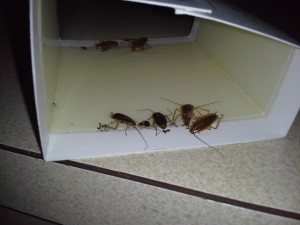
You never know what you will find when you go for a walk around your campus, hope you are having a great summer.
I can’t believe 2025 is halfway complete, time seems to speed away every year. As many of you prepare for another school year, here are a few things as IPM coordinators, parents, pest management professionals and others should know as we head in to fall.
The school IPM Coordinator two-day workshops will be held in Harris and Nueces Counties, and all are welcome to attend. The first day of the workshop covers the information a new IPM coordinator needs to know. On the second day of the workshop, we offer 5 different CEU topics to offer returning IPM coordinators a chance to earn their continuing education requirements. To learn more about these classes visit the AgriLife Register website for more information. The cost is $260 for both days, $160 for one day. The class is from 8:30 am to 5:00 pm with an hour for lunch. Click on the hyperlinks for the date you are interested in attending.
September 10 & 11, 2025 Gerald D. Young Agricultural Sciences Center, 5801 Katy Hockley Cut Off Rd, Katy, TX 77493
October 15 & 16, 2025 Corpus Christi ISD Instructional Resource Center, 4321 Prescott Street, Corpus Christi, TX 78416
Upcoming Pesticide Safety Programs: Not sure where to start when it comes to obtaining a pesticide license in Texas, no worries we have a group for that. Do you work for a school district, childcare center, hospital, hotel, motel, nursing home, food processing plant, or city/county government? If you answered yes, You Need a non-commercial applicator license for grounds or structural pest applications. Contact our Ag & Environmental Safety Unit to learn more about the classes you can take to help you pass your licensing exams.
Below is a list of upcoming classes, don’t see one you in your area? Talk with the AES staff about what it takes to hold a course in your area. Classes run from 8AM to 5PM with an hour for lunch. Depending on the course manuals will cover the cost. Visit the AES website https://agrilife.org/aes/ or call (979) 845-3849. Follow the links below to register for the current offerings.
General Standards/ Technician Training
- August 13th and October 2, 2025 (Plano)
- August 20th and November 6, 2025 (Humble)
- August 19th (Humble)
- October 1, 2025 (Plano)
Landscape Maintenance Training
- August 27th and November 12, 2025 (Fort Worth)
- October 15, 2025 (Austin)
- September 17, 2025(Humble)
Pesticide licensing exams can be set up after gaining the approval of the Texas Department of Agriculture. Once approved for testing, visit Metro Institute’s website here to create an account and schedule your exam at one of the testing locations featured in the graphic to the right.
Pest Profile: Cockroaches Miss Avery Brooks, AES Student Worker

This image captures German cockroaches on a monitoring device. By using the placement of this device and what is found will help to determine types of treatment options.
Cockroaches can be found in many structural environments such as hotels, restaurants, supermarkets, private residences, apartments, cruise ships, railroad cars, warehouses, and even electronic devices like telephones, computers, and cash registers. The presence of cockroaches can be identified by their unpleasant odor, fecal pellets, and stained runways. Their bodies are designed for indoor life, and their flattened body shape allows them to enter homes and other structures through tight cracks and crevices. Although it seems that cockroaches outlive humans, they do not have any special biological features that allow them to reproduce faster or be resilient to starvation, drowning, and radiation. They are simply tenacious and tend to reappear in places where they have previously been eradicated. As a result of their tenacity, the likelihood of any major species of cockroaches appearing on the endangered species list is very low. There are 30 species of cockroaches in Texas, but only a few of these species are found in urban landscapes and within structures. These include the German cockroach, the Asian or Oriental cockroach, the American cockroach, and the smoky brown cockroach.
The German cockroach is the most common structural roach in Texas and can be found indoors in kitchens, bath- rooms, or any other locations that can provide food, shelter, and warmth. This species of cockroach is known for hitchhiking on boxes, furniture, backpacks, gym bags and any other personal items that live with humans. You can control and eliminate this roach, but it does take effort on the IPM Coordinator, pest management professional and the occupants of the area being affected by these roaches. Not sure where to start visit our IPM in Action Plan for German cockroaches to determine what are your multiple control tactics you to need to eradicate this species.

Oriental cockroach (Blatta orientalis) Multiple Life Stages, watch for egg cases (ootheca) stop them before they develop.
Asian cockroaches are the flying cousins of the German cockroach species and is typically found in lawns and leaf litter. American cockroaches inhabit sewers and enter homes for food and shelter. The smokey-brown cockroach is mainly active at night and can be found in car ports, garages, and on the exterior of homes. The Surinam cockroach and the Cuban cockroach are normally outdoor roach species and are not normally found in structures. The Surinam cockroach is a non-native species and is considered a burrowing species that enjoy spending its time in mulched flower beds and compost piles. The Cuban cockroach has a unique green color when mature and is active at night, generally attracted to porch lights. Even after many years of technological improvements and developments in pesticides, cockroaches continue to maintain their presence, especially in urban structures and metropolitan areas. Controlling the presence of cockroaches plays a key role in improving public health. You can find the IPM Action Plan for Outdoor Cockroaches or to learn more about Texas cockroaches, join us at one of our Structural Pest Category 8-hour training courses or check out the Controlling Cockroaches in Texas Landscapes factsheet here.
Finally, want a view of the past of Texas School IPM training, check out these YouTube videos. Thanks to Thomas Stein, Shepherd ISD who found the original VHS copies of the live-streaming training from February and April 1995. There is a message from Representative John Hirschi who sponsored the law to start IPM in public schools in TX. While watching these videos I realized that the content has not changed in the 30 years since we adopted this law. Integrated pest management and pest management are linked, and it does require everyone to understand their role in the entire program. It does require understanding insects (pest ID) so that the proper prevention and control measures are used.
Part 1: Texas IPM In School Program How to Comply
Part 2: Texas IPM in School Program How to Comply

 .
.